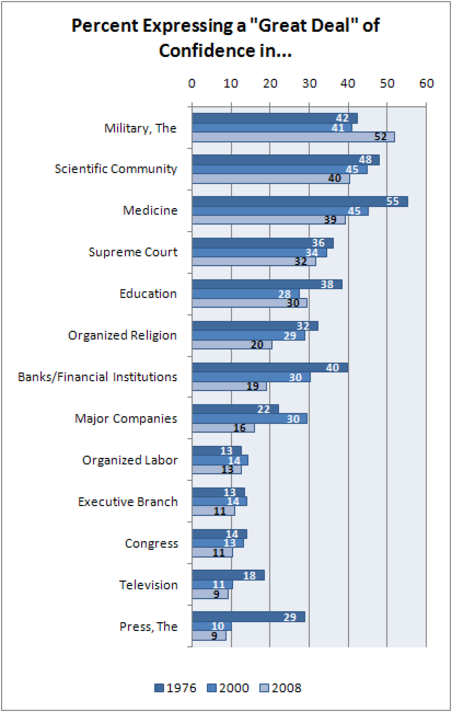
Iranian Protests: Flickr photo by John McNab
I commend Thomas Friedman’s Op-Ed today, “The Virtual Mosque”, where he wonders whether Facebook can play the same role for Iranian moderates that the mosque played for more extremist Iranians in mobilizing voters.
Social capital (or social connections) have always played a strong role in politics worldwide. Experiments in the U.S. show that that face-to-face mobilization is far more effective than phone mobilization, and churches have always played a strong role in political mobilization (especially in black churches, as American Grace, the new book by Robert Putnam and David Campbell will show [among many other interesting findings]).
These facts, in addition to the fact that the Iranian police state has guns (as Friedman points out) and is trying hard, and perhaps effectively to block and filter the internet, make me more skeptical of whether Facebook or Twitter can be as effective a tool in mobilizing Iranian moderates as the F2F connections at the mosque. But for sure these e-connections are way more useful than not being able to mobilize social networks. [And mark this as another example of how what appeared to be trivial technologies can be used as pro-democratic forces in repressive countries.] If you’re curious for a live and compelling updating of situation in Iran, see Andrew Sullivan’s blog. Note: the U.S. State Department even asked Twitter to defer maintenance for fear that this might adversely impact the protests!
Moreover, various news pieces have pointed out that the Guardian Council, which previously had maintained their infallability now looks a lot more fallable (after Khamanei initially immediately certified the results and now claims that there should be at least a partial recount). That’s a hard genie to put back in the bottle. It’s reminiscent of a conversation with a mother-friend of mine. When her kids misbehaved, she was constantly counting to five and telling her sons, “you better do it by the time I count to 5, or you’ll be subjected to the wrath of Mom.” I asked her what happened if her sons didn’t do something by 5 and realized that the consequences weren’t as dangerous as they feared. She smiled sheepishly and noted, “I’m hoping we don’t get to that point…” If people believe that the Guardian Council has no clothes, Iranian politics could change dramatically.
See Thomas Friedman’s “The Virtual Mosque” (NYT, 6/17/09)
See also the very interesting “Twitter on the Barricades: Six Lessons Learned” (NYT, 6/21/09, Noam Cohen)



